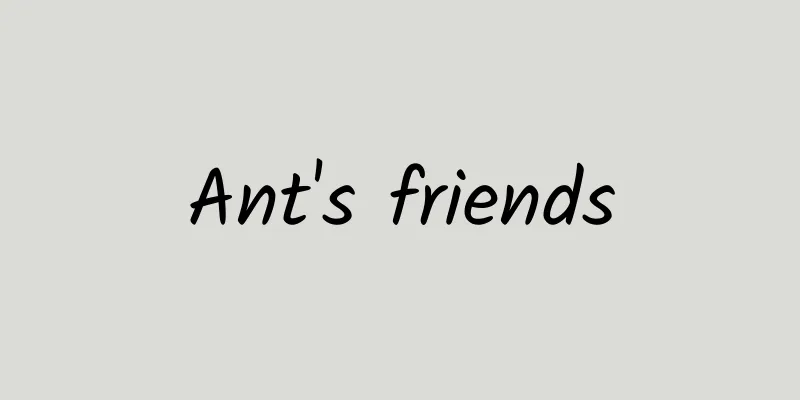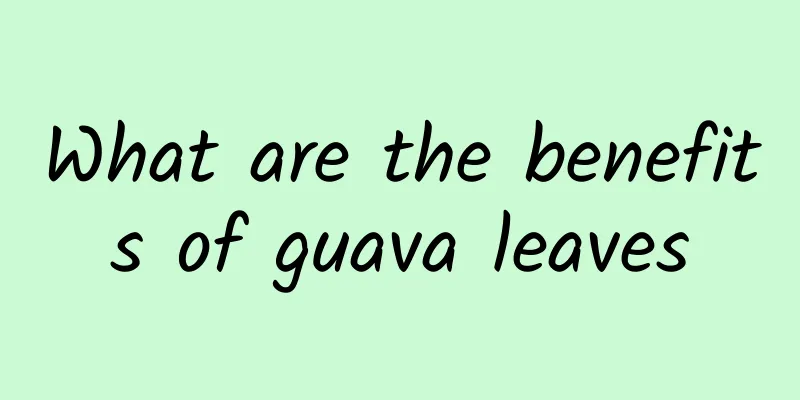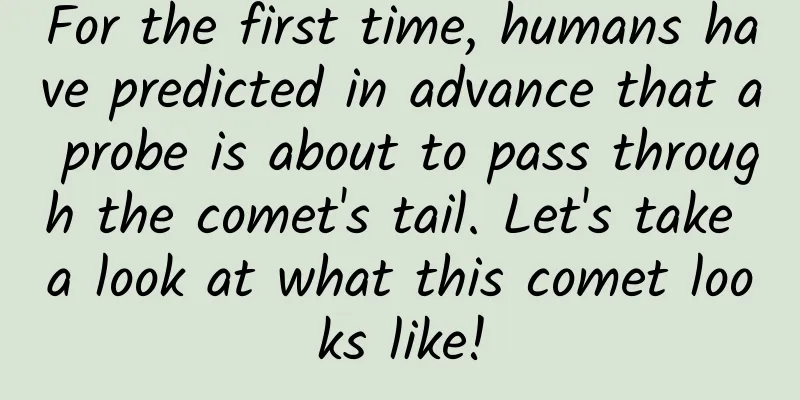Ant's friends

|
Image source: antwiki Ants have clear division of labor, unity and cooperation, and strong fighting power. They are the insect world that cannot be provoked. Naturally, many small insects try their best to get the protection of ants or even the shelter of ant nests. As a result, ants have also made many good friends! Do you know who are the best friends of ants? Which ones are friendly and harmonious, and which ones have ulterior motives? Hemiptera: aphid Image source: antwiki We all know that ants herd aphids, acting as "milkers" to cause them to excrete a sugary substance. The ants stroke the aphids with their antennae, stimulating them to release honeydew. Image source: antwiki Ants herd aphids to keep them safe, and if predatory insects or parasites try to harm the aphids, the ants will aggressively defend them, and some ants will even destroy the eggs of aphid predators (such as ladybugs). Image source: antwiki In addition, the ants will also do their duty to ensure that the aphids have an adequate food source. The corn root aphid, Protaphis middletonii, prefers to feed on the roots of corn plants. At the end of the growing season, aphids lay their eggs in the soil where corn plants are dying. Ants in corn fields collect the eggs and store them for the winter. They then carry the newly hatched aphids to the field and deposit them on a temporary host weed (Polygonum) so they can begin feeding. Once the corn plants begin to grow, the ants transfer their honeydew-producing partners to their preferred host plant, corn. Image source: bugguide.net Corn root aphid Protaphis middletonii Scale insects Image source: researchgate In addition to aphids, there are many other insects that secrete honeydew and are consumed by ants, such as scale insects. Image source: antwiki However, the result of this encounter between these two good friends is often unpleasant. In recent years, there has been a large outbreak of fine-legged ants on Christmas Island in Australia. The cause is the arrival of yellow scale insects from South Asia. These scale insects provide a stable source of carbohydrate resources (honeydew) for the fine-legged ants. Image source: www.piat.org.nz Anoplolepis gracilipes and Tachardina aurantiaca The study showed that if the ants were prevented from entering the tree canopy where the yellow gum scale lived to prevent them from harvesting honeydew, the number of ants dropped by 80% in just a few weeks compared to control areas where they could collect honeydew freely. However, if the slender-legged ants in the monitored area were removed with pesticides, all the yellow scale insects in the area where the ants were removed would die within 12 months. Image source: wikipedia Eucalyptus felt scale Eriococcus coriaceus living in symbiosis with ants It can be seen that ants and scale insects, this pair of good friends, have brought each other a better life, which explains why ants are often present in areas where scale insects live. Treehopper Image source: See watermark The ants also develop a close relationship with the treehoppers by collecting the honeydew they secrete. Treehoppers communicate through vibrations, and each species has a different vibration pattern that can travel through branches and up to a meter away, which is how they communicate with other members of the same species and even ants. Image source: www.si.edu If they encounter a predator, they will vibrate collectively and call for help from the ants, "Hey! There are predators around!" Image source: www.arkinspace.com The tree cicada not only benefits from the ant's mutual benefit, but also imitates its good friend. Cyphonia clavata is a famous tree cicada that looks like three connected balls sticking out directly from its pronotum. The purpose of this is to simulate the attack posture of ants to scare away predators. Image source: See watermark In fact, in addition to aphids, scale insects, and tree cicadas, the Hemiptera species of wax cicadas, foam cicadas, whiteflies, psyllids, and some stink bugs have also established a close feeding symbiotic relationship with ants. Lepidoptera: Lycaenidae Image source: news.ncbs.res.in Some gray butterfly larvae and ants have a nutritional symbiotic relationship. The larvae have special nectar glands (ant-loving organs) that can secrete a mixture of amino acids with a sweet smell that is very attractive to ants. The gray butterfly larvae exchange nectar for the protection of ants, which is a win-win situation for both parties. Image source: twitter For example, the larvae of the Zigzag butterfly mainly harm cycads and rely on secreting sugary rewards to attract ants and receive care from ants. Image source: See the watermark of the larva of Chilades pandava Not only that, some butterfly larvae secrete pheromones similar to those of ant larvae. When ants pass by and find that the baby larvae are left outside, they will immediately bring them back to the nest. For example, some larvae of the genus Lycaenidae. Image source: www.ukbutterflies.co.uk Take me home now Coleoptera: Rove beetle Image source: www.eurekalert.org However, some good friends like to stab you in the back, for example, members of the genus Pella of the subfamily Pederinae. They mainly live by sharing their host's prey or preying on sick and weak ants. When they encounter host ants, they will be attacked by worker ants. They rely on quick movement or defensive measures to protect themselves. Maoershan Ant Pella maoershanensis (arrowhead) There are more clever rove beetles that deceive their hosts by releasing chemical pheromones with attractive properties. They invade ant nests to lay eggs, which hatch in the nests. In addition to taking food from the ants' mouths, the hatched larvae grow by eating ant larvae. Image source: blog.livedoor.jp Getting food from host ants Members of the genus Lomechusa can secrete substances that confuse and soothe ants, not only making their hosts mistakenly think they are their companions, but also making them very fascinated. Image source: blog.livedoor.jp Lomechusa sinuata Ant Image source: See watermark As their name suggests, ant beetles also have a close relationship with ants. Some groups of them live in ant nests and have evolved the ability to produce ant pheromones, which allow them to freely control the ants' territory, including entering ant nests and feasting on ant larvae there without hesitation. Image source: www.vice.com Some ant beetles are even fed mouth-to-mouth fluids by worker ants in the colony and transported by the workers to a "nursery" in the nest, where they feed on the cuticular secretions of ant eggs and larvae. Image source: twitter Diptera: Nest fly Image source: bugguide.net The nest aphid fly also lives in ant nests and depends on ants for survival. Its larvae are hemispherical and shell-shaped, like a turtle shell, and also like a cool armored vehicle in the ant nest. Image source: twitter@Nick Porch They have different feeding behaviors: some species feed on detritus in the nest; some feed on young and dying ant larvae; and some feed on both ant larvae and ant pupae. Image source: www.myrmecos.net The reason why they can move unhindered in the ant nest is that the strange appearance of the aphid fly larvae in the nest is modeled after the ant pupae, which first deceives the opponent visually; secondly, this sturdy "armored" shape is itself a good defense. Image source: See watermark Moreover, the larvae of nest aphid flies have the same pheromones as their ant hosts, telling the other party "we are family, don't be violent." Image source: twitter@Nick Porch Blattodea: Cockroach Image source: © Insects Unlocked You might not think that some small cockroaches are closely related to ants. For example, the fungus-dwelling ant Attaphila fungicola lives in the nests of leaf-cutter ants. They are very small, only about 3 mm in size, and feed on the cuticular lipids of leaf-cutter ants or "planted" fungi. Image source: See watermark Attaphila fungicola Because they can simulate the smell of ants, they can live safely in the nest without being attacked by ants. In addition, fungus-dwelling ant nest cockroaches are very good at "hitchhiking". They will choose young female ants as "transportation tools" and ride on their backs when they are on mating flights, forming partners, and looking for new nests. Image source: See watermark Orthoptera: Ant Cricket Image source: twitter Ant crickets usually live in symbiosis with ants and in ant nests. Image source: See watermark Ant-crickets can release odor information that tricks ants into thinking they are of the same species, and they can also mimic ants' behavior to trick ants into returning food to them. Image source: See watermark What other “good friends” of ants do you know? Leave a message to tell the editor! References: https://www.antwiki.org/wiki/Honeydew_Gatherers https://www.thoughtco.com/aphid-herding-ants-1968237 https://www.si.edu/stories/beautiful-and-bizarre-treehopper Sciencenet - Those Hemiptera insects that have close contact with ants - Xie Qiang's blog (sciencenet.cn) Image source: Google If there is any infringement, please contact us to delete it Editor of this issue: Kongfeng Xiaoxian Journal of Plant Protection Source: Rendaishouhu |
<<: Musk participates in "saving the earth"! NASA launches the first planetary defense test mission
>>: Why do I always feel my heart pounding?
Recommend
The magical "Sarebo" and the noble "Jiusi Zheer"
In the middle of Lushan Scenic Area in Xichang, t...
The efficacy and function of bamboo leaf pepper leaf
There are many types of Chinese medicine. When we...
This kind of "red bag" is painful and swollen, and it is really dangerous to squeeze it! Learn these and go to the hospital less often →
If we talk about the most painful skin problem, b...
In-depth | Has the consumer revolution arrived? Takeaway recyclable tableware is becoming a trend in the United States
"Am I the only one who is concerned about th...
The efficacy and function of spicy grass
Do you know about chili grass? It is a common med...
The efficacy and function of bitter pot Lu Man
There are so many medicinal herbs in the world, a...
What is Pizza Grass?
Nature is strange and contains many things that w...
The efficacy and function of water chestnut leaves
Water chestnut leaf is a kind of traditional Chin...
“Guide to Eating Out Safely” Series: Will your stomach agree to eating barbecue?
Although barbecue is delicious, it poses certain ...
Why is there a saying that "cold urine and hot farts"? A little physiological secret from the perspective of biomechanics
1. Introduction "Cold urine, hot farts, poor...
Did the holiday pass by so quickly? Maybe it’s because your brain didn’t expect it to be so refreshing…
Students, the winter vacation is almost over, and...
Why does my voice sound so bad in the audio?
Since the introduction of voice services on socia...
Is there a sure-fire way to win at mahjong? Which game is more complicated: chess, go, mahjong, or Texas Hold'em?
Many children like board games, such as chess, go...
The efficacy and function of blunt-tooth bell incense
Blunt-toothed bell-shaped incense is a common Chi...









